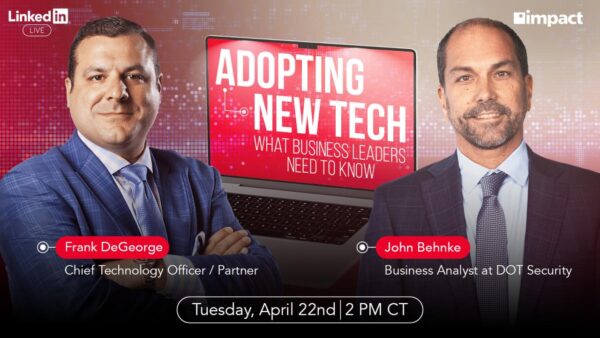Digital transformation took center stage at this unique four-day industry event.
After spending four days in unseasonably cool Scottsdale, Arizona, with more than 300 industry movers and shakers at The Executive Connection Summit (ECS), January 15-18, I walked away with many questions and a handful of answers about digital transformation (DX). What is it? What does it mean to dealers? How are OEMs driving DX? What’s next for DX?
Indeed, DX was the buzzword of the week at ECS conference and the focus of many presentations. Some presentations were presented at a high level, well above the pay grade of many in the audience, while others were easier for most attendees to grasp.
That’s what makes the ECS conference unique. High-level presentations take attendees ahead of the curve and outside their comfort zones. Attendees also have an opportunity to hear from many of the usual suspects as well as companies and individuals that don’t typically appear at traditional office technology industry events. For example, think Intel, Microsoft, Nextworld, Tuatara, AnyLogic, and Brunsgroup. This mix is essential for the document imaging industry to move forward, even if comprehending some content is challenging. That’s okay. Next year or the year after, that content might make much more sense. It’s certainly not a negative to be ahead of the curve. The important thing is to be aware of the curve before you hit it.
Depending on how you slice and dice it, 24 presentations/keynotes/before-lunch speeches were on the agenda, beginning on Sunday afternoon, January 15, and concluding on Wednesday morning, January 18. Did someone say, “information overload?” Admittedly, there was way too much information to digest. Still, it would be challenging for anyone operating in any segment of the office technology industry to depart Scottsdale without numerous useful nuggets of information or take homes.
DX is Driving Diversification
In the traditional document imaging technology dealer space, DX and diversification go hand in hand. At the ECS conference, dealers had plenty of opportunities to learn about new ways to diversify their product and services offerings. High on the list were managed IT and cybersecurity. Multiple presentations addressed these two segments.
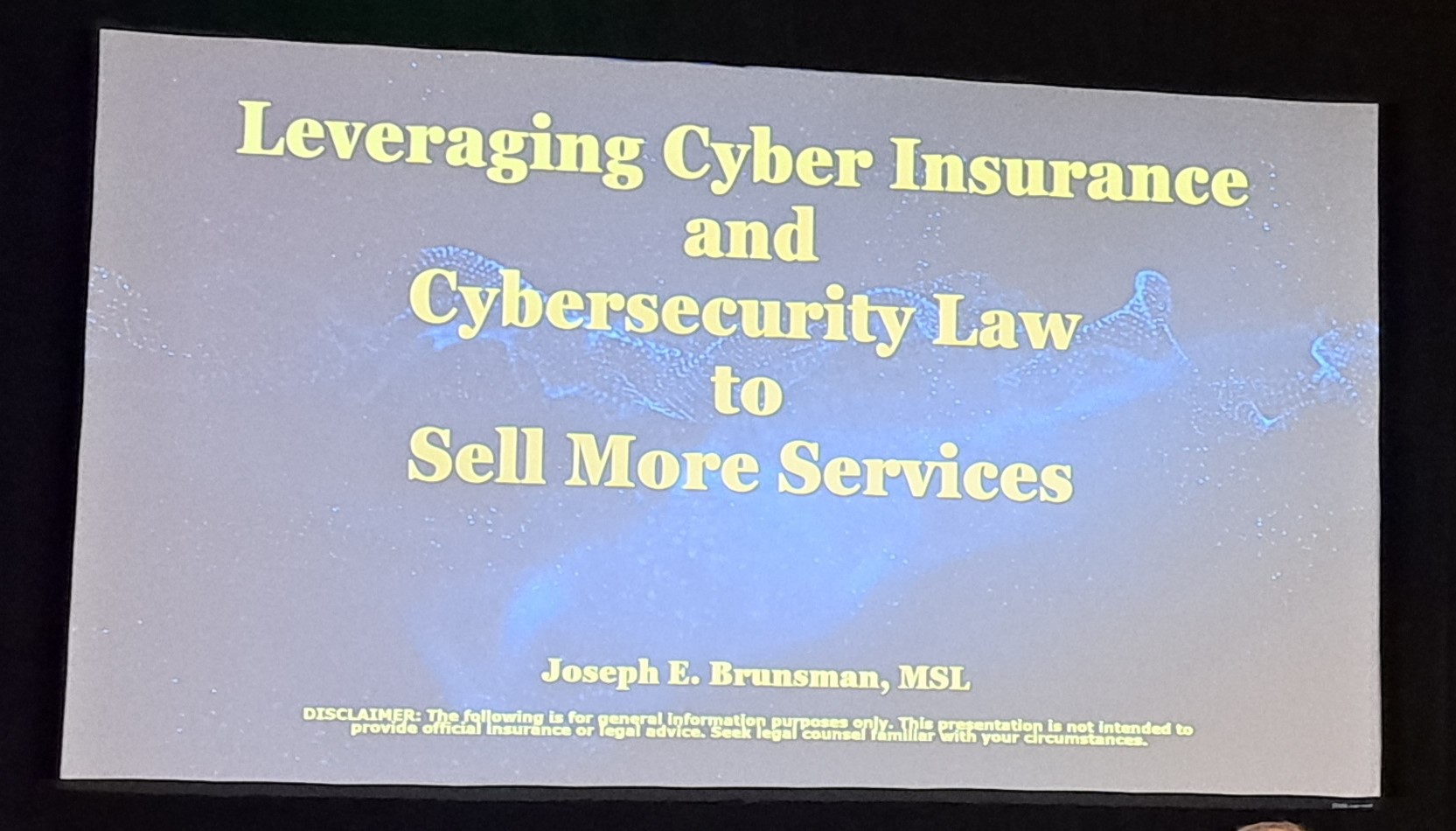
One of the surprisingly fascinating presentations was “Leveraging Cyber Insurance and Cybersecurity Law to Sell More Services” by Joe Brunsman of The Brunsman Advisory Group (Brunsgroup). He is also the author of books on cybersecurity and cybersecurity law. Brunsman offered an intriguing look at the dangers to companies that don’t have the proper cybersecurity to protect their organizations and their customer’s information. It was a chilling eye-opener as Brunsman reported that executives leading those companies can be held responsible should a breach occur. That breach could even impact their future employment. I know this wasn’t Brunsman’s message, but if I were a dealer listening to his presentation, I would think twice about getting into the cybersecurity business because of the complexity of cybersecurity and the legal ramifications.
Some of the other presenters, including ConnectWise, one of the document imaging industry’s more visible managed services providers, would disagree with my assessment. ConnectWise, for example, used the ECS conference to unveil its SASE (Secured Access Service Edge), a zero-trust-based security platform that can help protect remote and hybrid workers and their cloud data against cybersecurity threats without the risk of compliance violations. When ConnectWise speaks, many dealers listen, and this company is perched on the leading edge of cybersecurity with its expertise and solutions.
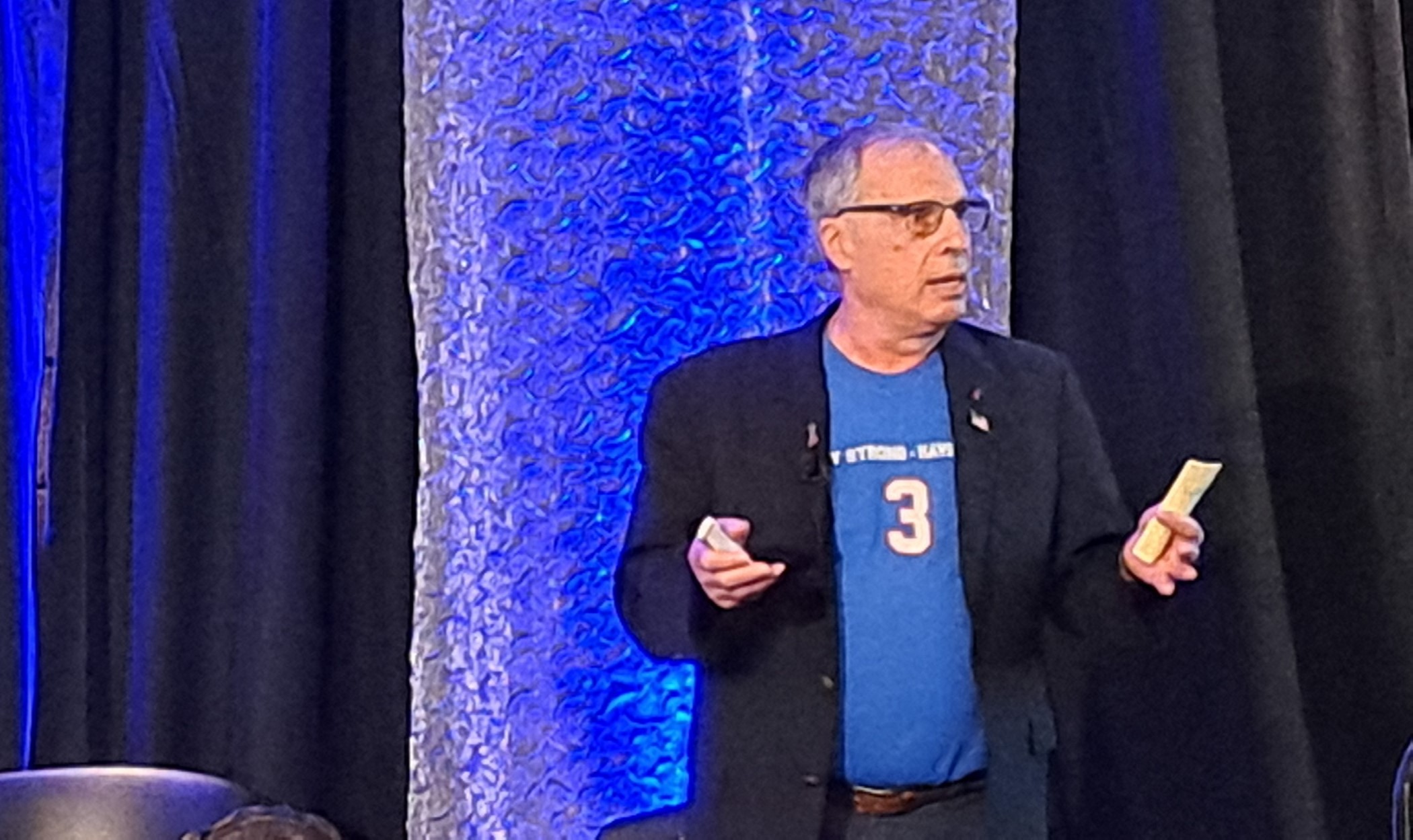
Above: Kevin Kartstedt of Keypoint Intelligence makes a case for label and packaging equipment.
Kevin Kartstedt, vice president, labels and packaging division, Keypoint Intelligence spoke about opportunities in the label and packaging space, a message that seemed to resonate with many dealers in attendance. Products here encompass tabletop and benchtop digital label presses and pre-die-cut PS labels. These are products that print and require abundant supplies (labels), making it an easy product segment for dealers to wrap their arms around. As Karstedt noted, users of these devices, primarily in-plant printers, are constantly upgrading their hardware (these products have a two- to three-year life cycle) and software.
An advanced engineering degree wasn’t necessary to understand Mike Hannon, managing director, North America, FP Mailing Solutions, during the Sunday press conference. He informed the audience about the United States Postal Services’ move to a new postage meter and PC postage evidencing technology called Intelligent Mail Indicia (IMI) in 2024, replacing the current Information-Based Indicia (IBI). As a result, mailers must update their postage meters and PC postage systems. According to Hannon, this is a great opportunity, especially since nearly 650,000 postage machines must be replaced.
Last year at the ECS conference, software distributor ACDI unveiled its initiative to market EV chargers. This year, it provided an update on that initiative. The company has approximately a dozen dealers selling the product and continues to see strong market opportunities for this product category. Considering the number of electronic vehicles in use today and the growth projected for that market, this is a viable diversification opportunity, even if it isn’t exactly DX, that dealers should take seriously.
Another interesting diversification opportunity, albeit it would be a stretch calling it DX, was presented by Hytec Dealer Services. The company was gauging interest from dealers for an air purifier for offices, a product currently sold in Japan. Dealers seemed intrigued by the product but were concerned that there was no recurring revenue. Its high price tag—approximately $14,000 for a device with a compact footprint—was also a concern.
Digitally Transforming the Traditional Dealer Sales Model
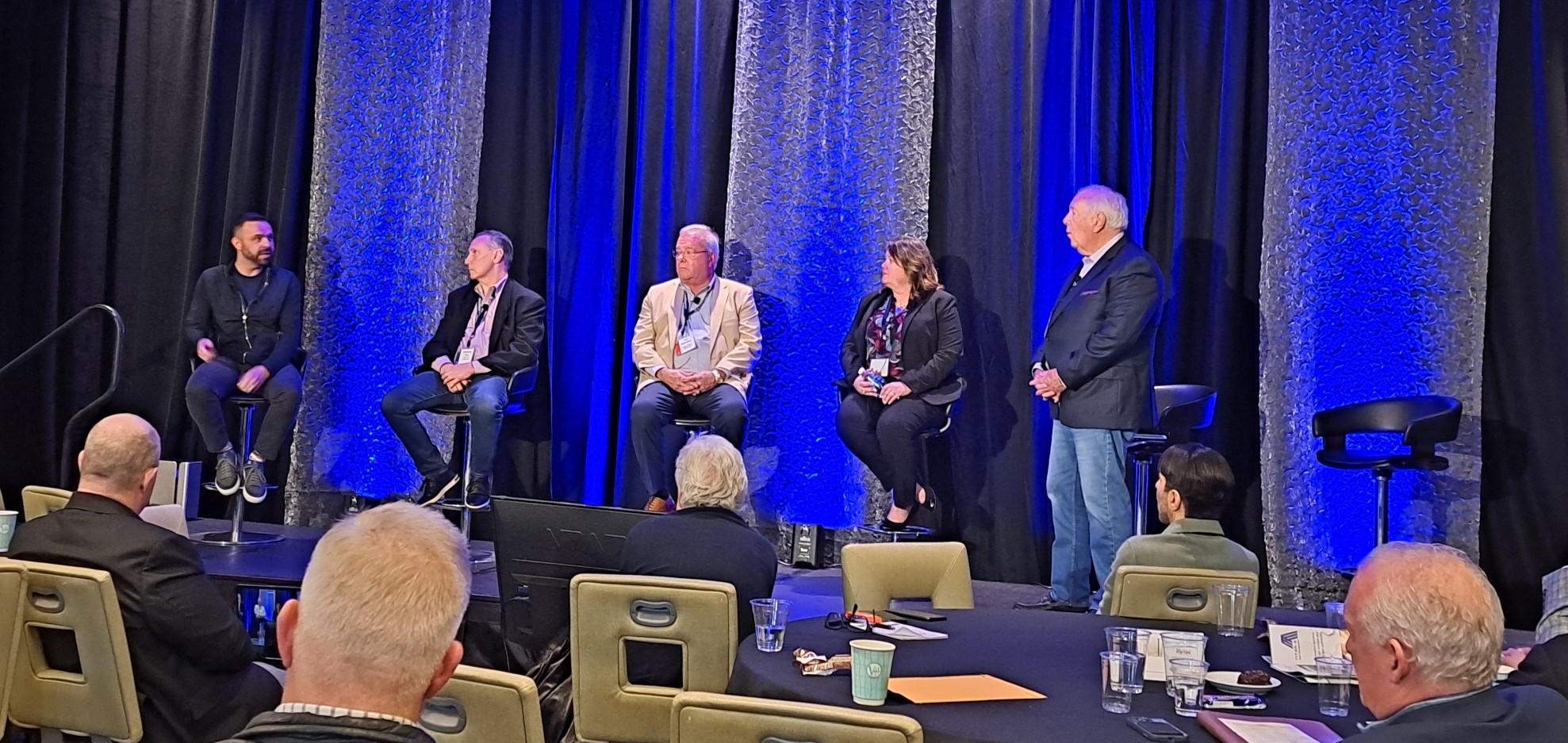
Above left to right, Stewart Reynolds, Anthony Sci, Tim Renegar, Tawnya Stone, and Ed McLaughlin.
An e-commerce panel moderated by Ed McLaughlin, former president of Sharp and co-founder of Predictive InSight, discussed the viability of e-commerce for office technology dealers. It was a timely presentation, especially since companies such as Kyocera and Konica Minolta have been touting e-commerce of late. McLaughlin was joined by Tim Renegar, president of Kelly Office Solutions, an independent dealer; Anthony Sci, president of Keypoint Intelligence, another organization that has developed an e-commerce platform; Tawnya Stone, vice president, strategic technology, GreatAmerica Financial Services Corporation, an industry thought leader; and Stewart Reynolds, CCO and co-founder, Shopblocks, a UK-based e-commerce platform developer. The panel did an excellent job advocating for e-commerce even if some dealers in attendance aren’t yet ready to change their business models. However, let’s see where the industry is a year from now and if any minds are changed as competitors adopt this sales model for lower-end A3 and A4 devices, single-function printers, supplies, accessories, and non-print-related products such as PCs and laptops.
Leveraging Data to Transform Digitally
What better company and person than HP’s Tami Beach to discuss the importance of data to move one’s business forward in the 21st century? Her presentation, “Rolling with the Changes: Embracing Data, Analytics, and AI tools to Fuel Business Growth” was one of my ECS highlights.
As Beach pointed out at the beginning of her presentation, “Over the next 15 years, we will experience more change than in all of human history to date.” Her message to dealers was that shift thinking could be a catalyst for change, particularly in the print arena.
Beach educated attendees about three types of data insights: Descriptive, Predictive, and Prescriptive. Descriptive shows partners’ performance relative to their country or market in growth, product performance, and inventory. Predictive insights give partners a view into their customers’ purchasing probabilities, uncovering growth opportunities and potential efficiencies. Prescriptive insights provide partners with recommendations on specific sales and marketing actions. Customers receive concrete customer-oriented suggestions to act on.
By tracking performance and benchmarking through descriptive data, Beach explained that companies could identify sales trends in their country or region, see how their performance compares to the trends in their country and region, better understand their competitive position, identify the key verticals that are buying more or less, understand if they are growing faster than competitors in those key customer verticals, and what products key vertical segments are buying.
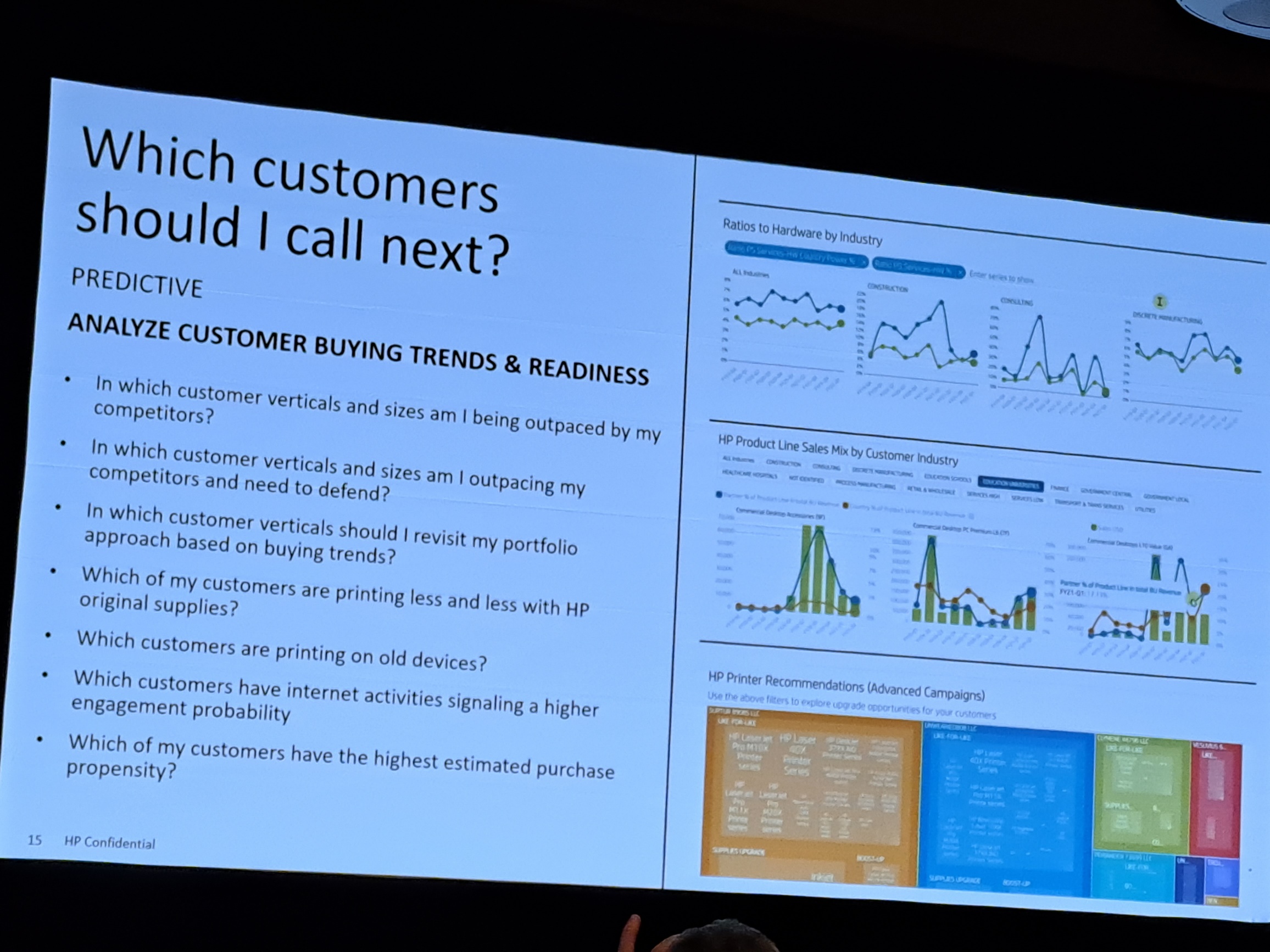
With predictive data, a sales organization can analyze customer buying trends and readiness. In addition to tracking performance within specific verticals, this data allows a sales organization, for example, to see which customers are printing less with HP supplies, which customers are printing on old devices, which customers have internet activities signaling a higher engagement probability, and which customers have the highest estimated purchase propensity.
Using predictive data and analytics, a sales organization can create targeted sales and marketing strategies, such as explaining to the customer the age of their fleet and the value of upgrading, how to simplify their fleet, and providing insights are their intended activities to increase relevance.
This was a dynamic presentation, and it will be interesting to see if dealers and other critics of what HP is doing around data with programs such as its Amplify Data Insights partner intelligence platform eventually understand that this information can benefit their businesses and help them sell more. HP wasn’t the only company touting the benefits of data and analytics at ECS. As Sharp President & CEO Mike Marusic discussed in his keynote address, “Existing data can lead the way to new business.”
AI = DX
Artificial intelligence (AI) is another trend that will shape the future of the office technology industry and was referenced in numerous presentations. As Beach pointed out in the conclusion of her presentation on data and analytics, “AI is the key to unlocking efficiency, cost savings, and delivering exceptional customer experiences.” Mike Lee, SVP, CIO, Konica Minolta Business Solutions U.S.A., highlighted the differences between machine learning (e-commerce recommendations, e-mail spam, predictive analytics) and AI (robotics, personal assistants, chatbots) during his presentation.
A high-level presentation from Brian Evergreen, global head of autonomous AI co-innovation, Microsoft Research, referenced ChatGPT, a chatbot from OpenAI, a Microsoft partner, that received much attention—both positive and negative—when introduced in November 2022. ChatGPT can write and debug computer programs, compose music, write student essays, answer test questions, write poetry and song lyrics, play games like tic-tac-toe, and simulate an entire chat room. But it can do much more than that, which is why AI is a digital transformation that will have a huge impact on all segments of society, including the office technology industry. For many attendees, ECS was their introduction to ChatGPT. Undoubtedly, the office technology industry will be hearing much more about this technology and other forms of AI going forward.
Highlights Reel
The aforementioned presentations were the highlights of ECS for me in terms of trends-related content, as was a presentation by Ron Petrucci, vice president and general manager, Katun North America. His presentation on managing chaos should serve as a template for future ECS speakers who sometimes default to sales pitch mode on balancing the promotional with the informational and educational. Presentations by former office technology industry executive and dealer Tony Pater and sales guru Mike Riordan were informative, entertaining, and a hit with attendees.
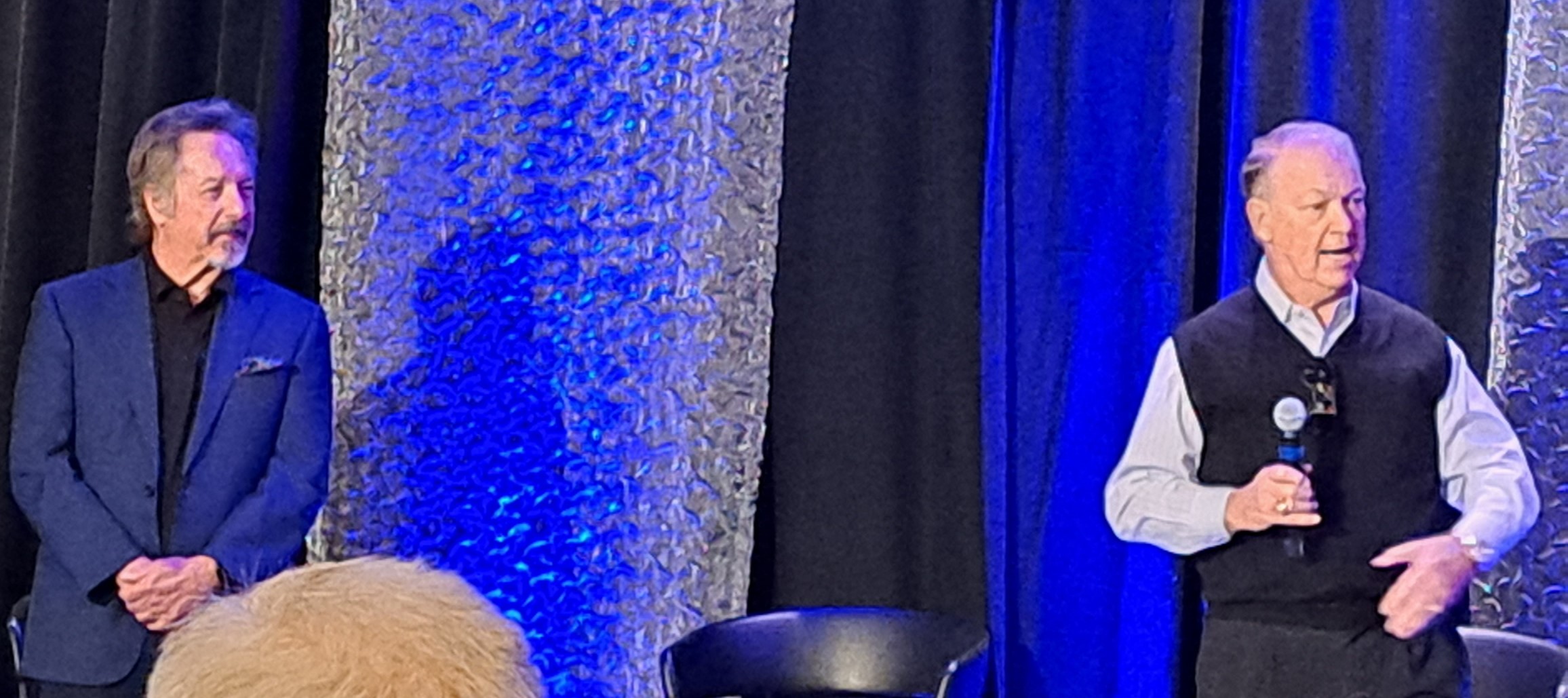
Above: Mike Stramaglio listens as Tony Pater describes his incredible career journey.
Overall, this was an exceptional event. Kudos to Mike Stramaglio and Hiro Ueda of Stramaglio Consulting. Much of the content and presentations resulted from input from The Consortium, an organization created by Stramaglio to drive the document imaging industry forward. It’s doubtful anyone left without a few action items to consider, including how some of the trends discussed will impact their business and their customers’ businesses not only today but tomorrow as well.
_________________________
To become a subscriber, visit www.thecannatareport.com/register or contact cjcannata@cannatareport.com directly. Bulk subscription rates are also available upon request and included in our media kit.



